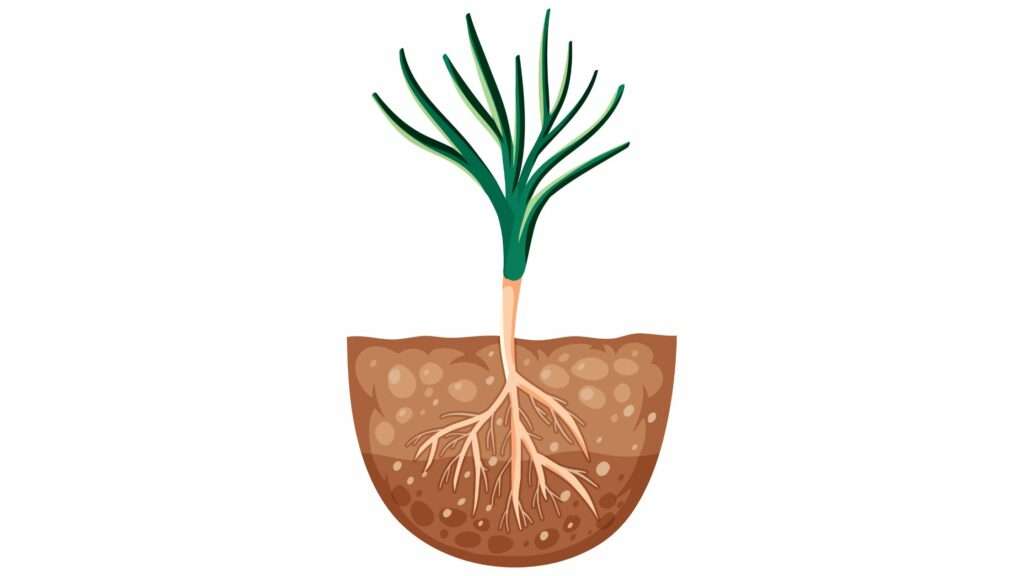In the realm of tropical agroforestry, the concept of Multi-Purpose Tree Species (MPTs) takes center stage. While the term “tree” in agroforestry typically conjures images of perennial, towering plants, MPTs delve deeper, encompassing woody species intentionally nurtured for a spectrum of preferred uses, products, or services. Often overlooked in conventional agriculture and commercial forestry, these remarkable species constitute the heart of most agroforestry systems in tropical regions. While they might be classified under seemingly singular categories like fodder trees, fruit trees, or fuelwood species, MPTs defy such compartmentalization by offering a plethora of products and services.
Championing the cause of MPTs in tropical agroforestry demands a concerted effort in gathering, synthesizing, storing, and disseminating information on a global, national, and regional scale. This initiative seeks to elevate these versatile species to their rightful place.
A recent taxonomic survey conducted in 2015 unveiled a treasure trove of 501 wild and naturalized tree species, representing 284 genera across 80 families within the forests of Odisha. From the stalwarts like bamboo, teak, and rosewood, to the lesser-known players such as piasal, sirish, and bandhono, the biodiversity is awe-inspiring. The forests, primarily dominated by tropical dry deciduous and moist deciduous varieties, harbor a symphony of life.
MPTs emerge as pivotal agents within local farming systems, orchestrating food and nutritional security while nurturing the sustainable livelihoods of indigenous communities. Their diverse contributions stand poised to fortify resilience against a backdrop of evolving climatic challenges.
Table of Contents
The Versatility of Multi-Purpose Tree Species (MPTs)

Multi-Purpose Tree Species (MPTs) are botanical wonders intentionally cultivated to yield two or more products while also fulfilling vital service functions, such as providing shelter, shade, and enhancing the sustainability of land-use systems. Interestingly, a single woody perennial species can be ‘multi-purpose’ in one context and ‘single-purpose’ in another. These versatile trees possess the remarkable capacity to yield a plethora of products and perform diverse functions within both agricultural and forestry frameworks.
By seamlessly integrating MPTs into farming and forestry practices, we unlock pathways to heightened yields, product diversification, enhanced economic resilience, and the long-term sustainability of agricultural endeavors. Serving as linchpins within holistic farming systems, MPTs offer a safety net that fortifies farms against unforeseen shifts in environmental and market dynamics.
In regions like Tamil Nadu, farmers adeptly interlace an array of MPTs and shrubs into their farmlands, coexisting harmoniously with agricultural crops and livestock. Eminent figures among these species include Borassus flabellifer, Tamarindus indica, Ceiba pentandra, Leucaena leucocephala, and Acacia leucophloea and A. nilotica. Thriving amidst challenging conditions, these resilient woody perennials demonstrate an adaptive strategy to mitigate the risks of crop failure.
Additionally, specific species like Prosopis juliflora and Delonix elata are intentionally employed to rehabilitate infertile or saline soils, creating a conducive environment for annual crop cultivation. Beyond furnishing valuable resources like fuelwood, charcoal, fruit, and fodder, these species demand minimal inputs while affording farmers diverse management alternatives when confronted with lackluster crop growth. Elevating the productivity of these modestly studied agroforestry systems through scientific intervention stands as an imperative goal.
Also read – Promoting Sandalwood Cultivation for Sustainable Agroforestry in India
Recognized worldwide for their remarkable resilience, fast-growing MPTs offer invaluable environmental benefits owing to their adeptness at thriving in adverse weather conditions. Particularly in semi-arid regions where water scarcity prevails, trees showcase special adaptations—deep taproot systems, summer leaf shedding, leaf wax coatings, sunken or closed stomata, and compact leaf size—to minimize water loss through transpiration.
In the realm of semi-arid agro-ecological domains, certain MPTs reign as the predominant and preferred choices. Neem (Azadirachta indica), Karanj (Pongammia pinnata), Desibabool (Acacia nilotica), Shisham (Dalbergia sissoo), Subabul (Leucaena leucochephala), and Bamboo (Dendrocalamus strictus), among others, take the lead. These species harmonize effectively with the semi-arid climate, endowing farmers with invaluable resources to support their livelihoods.
Evident agroforestry practices such as silvipasture, alley cropping, woodlots, protein banks, and bamboo plantations emerge as favorable options for small and medium-scale farmers, yielding livelihood opportunities and providing windbreaks and shelterbelts to safeguard crops and livestock from the harsh elements. Additionally, MPTs in the form of perennial shrubs contribute vital green cover and forage during the arid summer months, strategically optimizing resource utilization and delivering a suite of ecosystem benefits.
In essence, the multi-faceted contributions of Multi-Purpose Tree Species hold transformative potential for food security, livelihood enhancement, and ecological resilience, making them indispensable components of sustainable agroforestry landscapes.
Benefits of MPTs

Enhancing Food Security
- Trees yield human-edible treasures such as fruits, nuts, leaves, and cereal substitutes.
- Trees offer fodder that sustains livestock, underscoring their role in the trophic chain.
- MPTs contribute bio-manure through nitrogen fixation, deep root access to soil nutrients, and elevated organic matter levels.
- These trees support soil and water conservation.
- MPTs play a pivotal role in environmental amelioration.
Amplifying Water Resources
- MPTs enhance rain-fed systems and pastures by improving soil structure and microclimates.
- Through run-off reduction, interception improvement, and storage in infiltration galleries, MPTs regulate stream flow.
- Hedgerows of trees act as protectors of irrigation structures.
- Phreatophytic trees improve drainage in waterlogged or saline soils.
- Forage and fodder trees store water-rich biomass for animal consumption in dry seasons.
Empowering Energy Resources
- Trees provide firewood for direct combustion.
- MPTs generate charcoal, oil, and gas through pyrolytic conversion.
- Wood and charcoal feedstocks can produce gas.
- High-carbohydrate fruits are fermented for ethanol, while woody feedstock yields methanol through distillation or synthesis.
- Oils, latex, and resins serve as combustible resources.
- Trees can enhance wind power by creating venturi effects through strategic arrangements.
Versatility in Shelter and Construction
- MPTs provide building materials.
- Trees offer shade for humans, livestock, and shade-loving crops.
- Wind-breaks and shelter-belts safeguard settlements, cropland, and pasture.
- Living fences offer a natural barrier.
Essential Resources for Processing
- Trees supply wood for various crafts.
- Trees provide fibers for weaving industries.
- Fruits and nuts contribute to food-processing industries.
- Trees offer tannins, essential oils, and medicinal ingredients.
Economic Enrichment
- Products from MPTs can be sold for direct financial gain.
- Increased productivity and input savings resonate through associated crops and livestock.
Social Contributions
- MPTs yield goods for social exchange, such as ceremonial foods and items for rituals.
- Trees contribute to social coffers for rituals, development, and political purposes.
Characteristics of MPTs
Multi-Purpose Tree Species should exhibit the following key attributes:
- Versatile Adaptation: MPTs should display a broad capacity to acclimate to local cultural, soil, and climate conditions.
- Crown Elegance: An open and slender crown structure is essential, permitting ample sunlight to penetrate the ecosystem.
- Resilience to Management: MPTs should withstand various management techniques such as coppicing, lopping, and pollarding.
- Rapid Regeneration: A quick sprouting habit is desirable to facilitate swift recovery and regrowth.
- Productivity Spectrum: MPTs should offer a rich array of resources, encompassing poles, wood, food, fodder, medicinal materials, and more.
- Nutrient Enrichment: The production of effective leaf litter that releases nutrients at opportune phases of the crop cycle is advantageous.
- Root Pruning Potential: Having a limited number of shallow lateral roots that can be pruned is favorable.
- Nitrogen Fixation Capability: MPTs should possess the ability to aid in nitrogen fixation, enhancing soil fertility.
- Climate Resilience: Resistance to drought, flooding, soil diversity, and other climatic challenges is essential.
- Root System Robustness: MPTs should showcase a deep and sturdy taproot system, enhancing stability.
- Ease of Management: Simplicity in care and maintenance is a valued characteristic.
- Cost-Efficient Establishment: MPTs should be economically viable to plant and nurture.
- Demand and Value: A high demand and favorable market value for the produced goods contribute to the appeal of MPTs.
Some Multipurpose Trees (MPTs)
| Species name | Common name | Product | Use |
|---|---|---|---|
| Adansonia digitata | Baobab | Leaf, Fruit | Food |
| Allanbachia spp. | Nsangomo | Kernel | Oil |
| Chrysophyllum albidum | White star apple | Fruit | Food |
| Dacryodes edulis | Safou | Fruit | Food and oil |
| Irvingia gabonensis | Bush mango | Kernel | Food thickening |
| Garcinia cola | Bitter cola | Kernel | Stimulant |
| Gnetum Africana | Eru | Leaf | Food |
| Parkia biglobosa | Néré | Kernel | Food |
| Prunus Africana | Pygeum | Bark | Medicine |
| Ricinodendron heudelotii | Njangsang | Kernel | Spice |
| Tamarindus indica | Tamarind | Fruit | Food |
| Vitellaria paradoxa | Shea nut | Kernel | Food |
| Zizyphus mauritiana | Ber | Fruit | Food |
Revolutionizing Nutrient Cycling: The Role of Nitrogen Fixing Trees

Over millennia, the practice of nitrogen fixation has proven its worth in perennial agriculture. Among these, the nitrogen-fixing tree legumes, such as Albizzia lebbeck, Leucaena leucocephala, and Delonix regia, stand out as invaluable assets in subtropical and tropical agroforestry. Incorporating them into agroforestry systems holds the promise of restoring nutrient cycling dynamics and achieving fertility self-sufficiency.
In environments devoid of vegetation, pioneering plant species take the lead by extracting and accumulating available nutrients. As these nutrients become integrated into the biological ecosystem and vegetation takes root, conditions improve for non-pioneering species. Nitrogen-fixing trees, acting as pioneers, play a crucial role in enhancing fertility and ameliorating harsh conditions, ultimately benefiting the entire ecosystem.
Renowned for their deep-reaching roots, Nitrogen Fixing Trees (NFTs) tap into subsoil nutrient reserves. The consistent shedding of their leaves nurtures soil microorganisms, which, in turn, facilitate more robust plant growth. Moreover, their expansive root networks stabilize soil structure while introducing organic matter as they grow and decay, thereby enhancing aeration. Beyond these benefits, numerous NFT species yield an array of products and functions—ranging from food, windbreaks, and shade to animal fodder, fuelwood, living fences, and timber—while concurrently enriching the system with nitrogen.
Unlocking Nitrogen’s Potential: From Air to Plant
Nitrogen often holds the status of a primary limiting nutrient for plant growth. A deficiency in nitrogen halts plant development. Interestingly, an abundant reserve of nitrogen exists ubiquitously in nature—in the air. Constituting around 80% of the atmosphere, nitrogen gas (N2) accounts for approximately 6400 kg of nitrogen per hectare. However, N2 remains inert and inaccessible to plants. The nitrogen fixation process, wherein certain plants harness atmospheric N2 and convert it into biologically available forms, underpins this essential ecological pattern.
Strategic Integration of NFTs within Ecosystems
In tropical landscapes, a majority of available nutrients (over 75%) reside not in the soil, but within organic matter. Subtropical and tropical forests exemplify dynamic nutrient cycling. Beyond their contributions to overall fertility and nutrient accumulation, NFTs exhibit swift establishment, rapid growth, and resilience to pruning. These traits position them as catalysts for organic matter production, yielding nutrient-rich mulch that nourishes other plants. Many NFTs, characterized by rapid growth, can be recurrently pruned over several years to generate mulch.
Integration of NFTs into ecosystems can take various forms, including clustered plantings, alley cropping, contour hedgerows, shelter belts, or isolated placements. Functioning as integral components of productive systems, they serve a multitude of roles: microclimatic enablers for shade-dependent crops like coffee or citrus (pruned seasonally to enhance fruiting); trellises for vine crops such as vanilla, pepper, and yam; mulch sources for home gardens; as living fences and fodder resources surrounding animal fields.
Symbiotic Nitrogen Fixation in Legumes: Unveiling the Process

Collaborating with a group of bacteria called rhizobia, leguminous plants engage in the extraordinary process of extracting nitrogen from the air and biologically storing it. These rhizobias, typically existing freely in the soil within the native range of specific legumes, establish a symbiotic relationship with plant roots. The bacteria inhabit small root structures known as nodules, obtaining energy from the plant and driving nitrogen fixation. In return, the plant acquires nitrogen for its growth.
Rhizobia comprises numerous strains, some compatible with multiple hosts and vice versa. The introduction of effective symbiotic rhizobia strains is critical when introducing hosts to new areas. These effective strains, tailored for various nitrogen-fixing legumes, can be procured inexpensively, ensuring efficient nitrogen fixation. For optimum results, introducing a known effective Rhizobium strain during seeding or using large, healthy nodules for seed inoculation is recommended.
In conventional farming systems, nitrogen-fixing plants accumulate an estimated 50-800 kg of nitrogen per hectare annually, dependent on factors like species, soil, climate, Rhizobium efficiency, and management practices. This stands in contrast to the energy-intensive manufacturing of nitrogen fertilizers, which yield high-priced nitrogen in a form detrimental to soil ecology.
Cultivating Resilience for the Future
Amidst a changing climate landscape, embracing resilient farming systems is essential to avert frequent crop failures, erratic rainfall patterns, and localized drought threats that jeopardize agricultural livelihoods. Diversified agriculture emerges as the imperative, necessitating the integration of MPTs into farming paradigms.
Distinguished by their rapid growth, MPTs not only confer economic advantages but also deliver a range of environmental and ecosystem services through agroforestry. This includes significant contributions to carbon sequestration, soil erosion mitigation, reduced leaching risk, and nitrogen enhancement via legumes—a symbiosis often linked with tree crops. Furthermore, MPTs bolster biodiversity.
The choice of species for agroforestry varies, contingent upon economic, silvicultural, ecological, and local considerations. Fast growth, high photosynthetic capacity, multi-purpose utility, coppicing capability, adaptability to local conditions, biodiversity value, ease of regeneration, economic value for local communities, and ecological compatibility are key criteria.
Fostering fodder trees and grasses on communal lands through community engagement, establishing local industrial collaborations for bioremediation, and value-addition ventures such as fodder pellet production and bark powdering by women’s self-help groups can create employment opportunities and enhance livelihoods in semi-arid Indian regions.
Educating children and communities about national agroforestry policies, nurturing their interests, and instilling practices like rainwater harvesting and MPT integration in their surroundings can significantly expand green cover outside forests while safeguarding natural forest reserves.
Pathways for Progress and Recommendations
Urgent mass awareness campaigns and targeted training initiatives are essential to elucidate the multifaceted advantages of MPTs. The forest department should proactively aid the production of MPT seedlings and saplings for large-scale afforestation drives. Collaborative efforts by children’s groups, women’s associations, farmer groups, and their unions can drive the incorporation of MPTs into local cropping systems.
State Livelihoods Missions hold the potential to support forest dwellers and small-scale farmers in implementing MPTs within village commons, forests, and small landholdings. Voluntary organizations can play a pivotal role by integrating MPTs into their afforestation programs, in partnership with relevant departments.
Resource agencies, international donors, CSR foundations can dedicate support to field programs focusing on MPTs and natural nitrogen fixation to address climate change challenges. Private sector entities and marketing agencies should join forces to aid local communities in conserving, propagating, and sustainably managing MPT-based farming systems.


